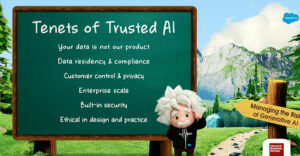
Consumers today don’t want to interact just with other consumers. Increasingly, they expect to interact and communicate directly with brands and companies themselves.
Over the past few years, companies have come to see these communities as a valuable asset, nurturing them as part of a brand’s offering. The benefits range from better consumer insight and lower customer support costs to increased word of mouth from passionate customers and purchase-decision leverage among prospects.
In most instances, companies tend to focus first on technical support, offering customers a reprieve from the frustrations of interactive voice response systems, uninformed customer service reps, and website FAQs. The cost savings and real-time accessibility of peer-to-peer support can be easily recognized by the business.
Evolutionary Process
Companies are quickly expanding their community efforts beyond their traditional support role, seeking to build loyalty, expand into new markets, and extend the ownership of their products. While companies have many approaches available to provide support, spur innovation, build loyalty, etc., online communities give them a powerful new tool.
Still, the design and recruitment of the community, the process of open collaboration, and the constant care and feeding necessary to derive real business value requires stepping into new territory — one that continues to evolve with the tools and technologies of social media.
Beyond paying close attention to online customer conversation — as well as the producers and consumers of that content — there should be an explicit strategy concerning the role of community in the overall communication mix.
Top Performers maximize the value of their investments in online customer communities in a number of different ways, according to the new “Gleansight” benchmark report Online Customer Communities (currently available for free download), including the following:
1. Provide compelling content and user experiences.
Almost universally, Top Performers agree that compelling content is essential to growing and maintaining a robust community. The best way to ensure this is to cultivate a mindset among company employees that they are participants in, not managers of, the community.
Company representatives must resist the temptation to talk down to members of the community, and should instead talk with them. As participants, they will more likely evaluate whether content is going to be useful to other participants.
On the flip side, irrelevant or abusive postings by some members detract from the experience and can kill a community. The best firms take a light but firm hand in moderating posts to keep discussions on track and beneficial.
2. Provide vehicles and incentives for driving customer advocacy.
As an important objective of engaging a community, advocacy shouldn’t be left to chance. While some advocacy will happen naturally, relatively small gestures can yield large increases.
One of the key principles is to treat community members as “insiders.” If they believe they are getting information about a new product or a special offer before the official launch, they will be eager to spread the word to show their status: Links, badges or apps are often enough.
Be careful of monetary rewards: Participants don’t want to feel they are being paid to do the company’s promotion. It’s often the intangible rewards, even simple recognition, that can empower community members and inspire them to participate at higher levels of activity.
3. Identify and proactively engage with key influencers.
Not all community participants are created equal. A small core group will likely create the vast majority of the content and spend dramatically more time engaging than the average user.
Top Performers recognize that these users are a key to driving value and, by a substantial margin, reach out to them to capture their enthusiasm. Beyond encouraging them to just add more content or continue their high level of activity, companies should tap into their passion for ideas on new features or topics to introduce into the community.
4. Provide key influencers/active participants with recognition and rewards.
These active participants and influencers aren’t engaged at this high level due to any expectation of rewards. Their natural affinity for the brand and their desire to help others typically compels their engagement.
Being recognized for this passion and selflessness is highly motivating, but they will be the most skeptical of something they feel is a “bribe” or trying to buy their loyalty.
5. Provide personalization/differentiated user experiences/content.
Community experiences are great — except when they are not. Because of their unruly nature, communities can grow haphazardly, increasing the time needed to find valuable information and the frustration associated with fruitless searching.
Providing tools like tags, ratings for posts, user subscription functions and other tools to help users sort content according to their preferences can improve the user experience.
In addition, it’s important to address each member with a personalized message. This is, after all, one of the key benefits of online customer communities: engaging in a two-way dialog with consumers to foster authentic relationships with them.
6. Integrate online activities with other peer-to-peer networks.
Companies have hosted user groups or customer advisory panels for years. However, these face-to-face meetings were expensive and could only be done periodically — and almost all communication was between the members and the company.
Current community platforms allow these groups to take on a greater life, and by connecting members to each other more directly, they enhance the total membership experience.
7. Integrate online communities into the overall marketing mix.
It is generally accepted that consumers trust other consumers more than they trust the brand managers or marketers who have traditionally controlled the company message.
Integrating customer communities and customer content into other marketing vehicles can improve the authenticity and effectiveness of the message, and can attract new participants to the community.
Jim Nail, a research fellow at Gleanster, formerly served as CMO at Cymfony and as a principal analyst at Forrester Research. He can be reached at [email protected]. Kevin S. Ryan is a research fellow at Gleanster and former vice president of social media at Barnes & Noble. He can be reached at [email protected].













































Social CRM
See all Social CRM